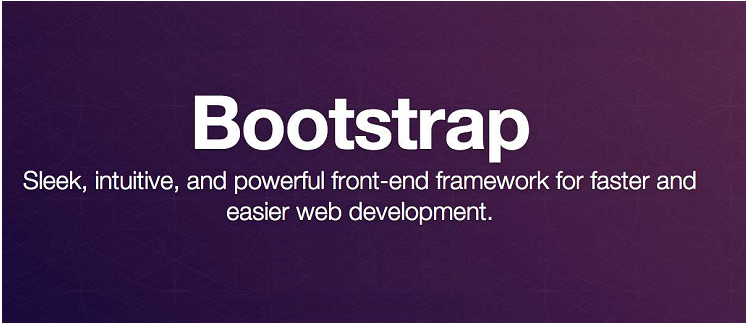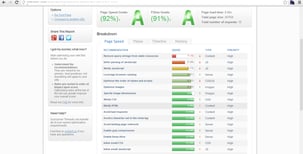The wonderful world of startups is full of excitement and hard work. Sheer business ideas simply do not cut the cake, you need a sharp edge of technology to deliver your best value.
In my previous blog, I have discussed at length about the importance of technologies to a startup. I will not beat that drum again but will play to you a more refined tune.
Here we shall discover some of the technologies used by rising Indian startups to manage the various segments of their business. This shall be a part of series of blogs, gently touching upon the technologies that build the technological wireframe of a startup business viz. frontend, backend, CMS, eCommerce, mobile, server, database etc.
In this specific post I shall talk about some frontend technologies that are both frequently used and easy to implement for a thriving and budding business like a startup.
The frontend of a website is the part that is totally user interactive. All the things that you see when you’re browse around the Internet, from colors and fonts to sliding menus, is a combination of HTML, CSS, and JavaScript.
Front-end developers are the ones that bring forth a company’s dedication towards user experience on the table. In order to accomplish this objective, front-end developers must be nimble at three languages: HTML, CSS, and Javascript programming. In addition to fluency in these languages, front-end devs need to be familiar with frameworks which I shall elaborate further.
Bootstrap: The most popular Frontend framework for startups and established companies alike. Majorly written in CSS and HTML, there is also an optional Javascript extension. Bootstrap allows building of dynamic websites and web applications with massive ease.

Perhaps the most leveraging advantage that Bootstrap has over other frameworks is the sheer speed of development and ease of setting up responsive designs due to its fluid grid layout that dynamically adjusts to screen resolution.
Foundation: Another very popular frontend framework for startups, created by ZURB. Foundation provides a very lively responsive grid and UI components of CSS and HTML including forms, snippets, typography etc.

There is stiff competition between Foundation and Bootstrap. Choosing one can get tricky but lets say if you want selection of large number of themes, chose Bootstrap. If you want to get a mobile first design up and running, pick Foundation. There is a very thin line that separates Foundation and Bootstrap with absolutely no such performance difference.
Pure.css: Pure is a spectacular lightweight framework which is written in pure CSS. The most wondrous thing about Pure is that all its modules are less than 4kb if served minified and gzipped, a substantial USP for startups.

Pure is simple and powerful to work with and that being said compared to Bootstrap. Pure eliminates the miseries of cruft web pages and encourages writing of application styles on top of it. It is responsive and also includes the most basic of UI elements.
Semantic UI: “UI is the language of the web” is their motto, and rightly so. Semantic possibly has one of the best dropdowns and forms. The code is concise and thus easier to learn for a newbie developer or budding developers of a startup.

Frankly speaking, Semantic does not really add a new serving to the platter but only manages reserve the menu. Metaphors aside, Semantic would probably be a good framework to work upon if you are new to frontend, otherwise its either Bootstrap or Foundation.
Honorable Mentions: UIkit by YOOtheme, Skeleton, Toast, YAML, Gumby, Susy and Kube.
A lot of front-end developer job listings also call for experience with Ajax, a widely used technique for using Javascript that lets pages dynamically load by downloading server data in the background. Using these tools, frontend developers can work hand in hand with designers or UI/UX experts to bring wireframes from development to delivery. Smart frontend developers can precisely identify issues in user experience and provide solutions to the design.
Apart from the above, a recent trend shows usage of JS frameworks as frontend. Startups with a more technical flair tend to utilize JS frameworks quite efficiently for their frontend.
The JS Framework battle

Ember.js: The simpler of all other JS. Docs and APIs are much more friendly and easier to understand. A performance focused JS with very low boilerplate.
Angular.js: The self proclaimed superhero of JS and also backed by Google. You can create your own custom DOMs with a large scaled ability to create one of the better frontends. Both Angular and Ember have two way binding.
React: Facebook’s cute little JS. It has one way binding, needs to be used with the built in architectural template, this along with many features that deny the usual JS traditions. The usage of React is increasing probably because of its boldness to stand differently in a market so fiercely contested.
Backbone js: The lightest and fastest of the crew. If combined with Pure CSS, one can have one of the most lightest designs.Backbone allows the developer to smoothly organize javascripts into reusable models etc. Backbone has all the abilities to create the most elegant of solution out of all the above Javascripts.
Honorable Mentions: Knockout, Skel, Meteor js, Polymer js and Aurelia
There are technical people out there and there are business people. Regardless of their domain of expertise, every user is a ‘visual person’ and even if every inch of the backend is stalwart, the web design fails if the frontend fails to impress.
If backend is the structure of a house then frontend is the interior design. UI/UX is what makes and breaks an industry, now that we are living in an era of resplendent technological marvels, one cannot afford to get complacent in its web design.
I hope you had a good time reading this post. This was part 1 of a series of blogs focused on showcasing the best technologies for startups. Subscribe to our blog and we will keep you posted with the later parts of this series and also keep you updated with the latest happenings around web, mobile and cloud technologies.



